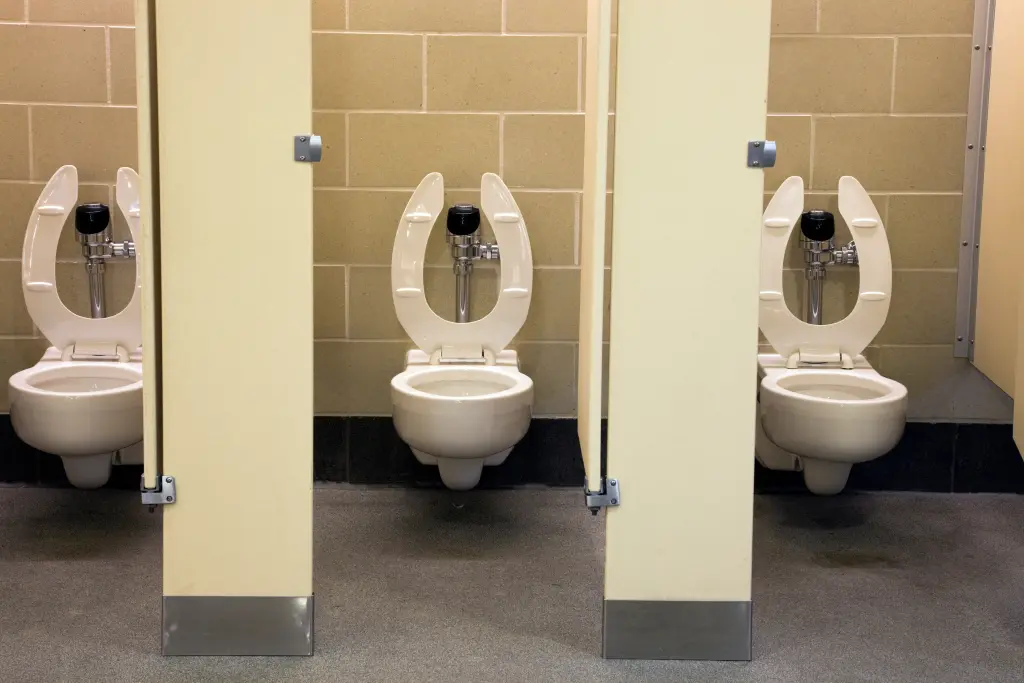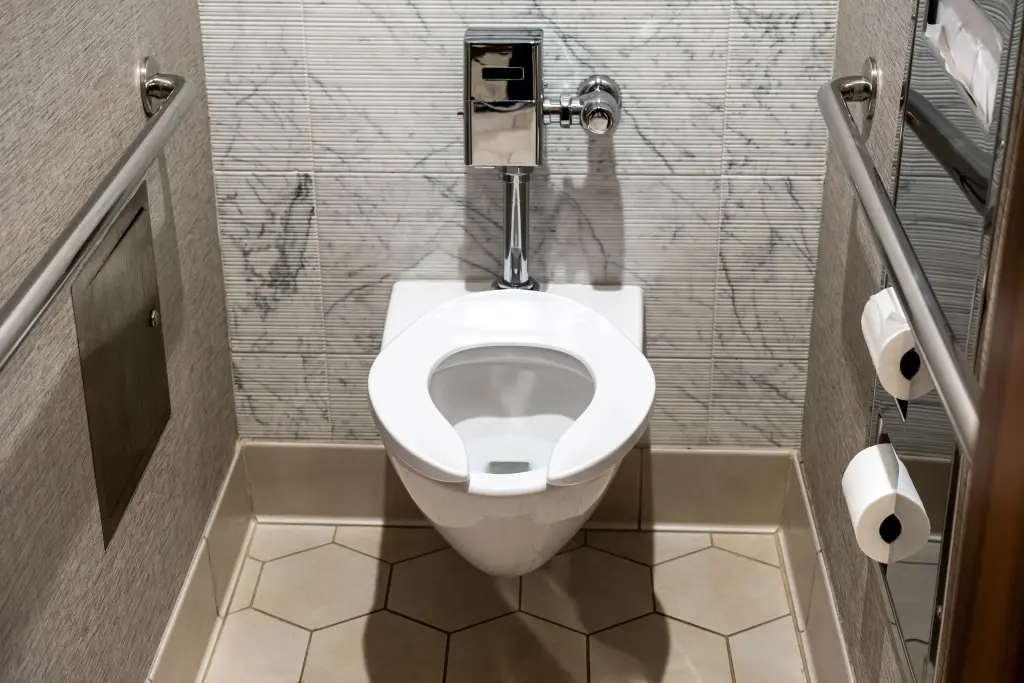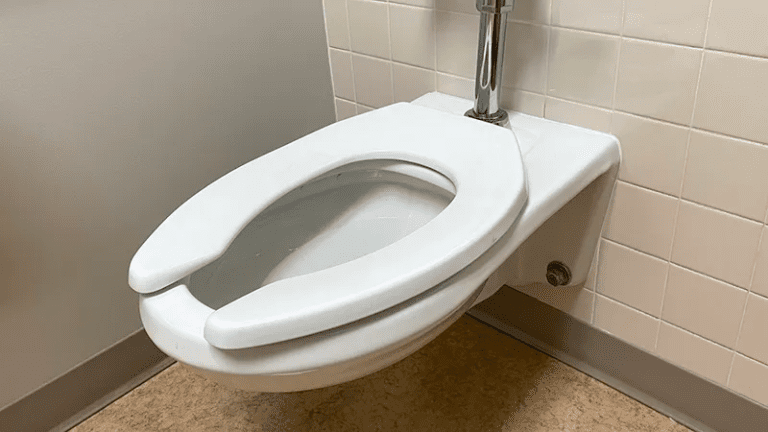Ever wondered why the toilet seats in public restrooms are U-shaped instead of the typical O-shape found at home? You might think it’s all about the design, but there’s a lot more to it than meets the eye. Believe it or not, this simple horseshoe shape serves multiple purposes—ranging from better hygiene to improved convenience. Ready to dive into the details? Let’s unravel the mystery behind the open-front toilet seat and see why it’s the chosen design for public restrooms.
What Exactly Is an ‘Open Front’ Toilet Seat?

An ‘open front’ toilet seat, also known as a U-shaped or horseshoe seat, features an opening at the front. Unlike the closed-loop seat that’s typically found in residential bathrooms, this design leaves a gap at the front. If you’ve ever used a public restroom, you’ve likely encountered one. But why is this design so common in public places? It turns out, this design isn’t just for aesthetics; it’s a smart choice for maintaining hygiene and ensuring comfort.
How the Open-Front Design Enhances Hygiene
The most popular theory is that U-shaped toilet seats are all about better hygiene, and there’s truth to this. Open-front toilet seats are specifically designed to minimize contact with bodily fluids that may have been left behind by a previous user. This reduces the risk of contamination, which is a significant concern in public restrooms that see heavy foot traffic.
According to Hugo Aguilar, Senior Vice President of Codes and Standards at The International Association of Plumbing and Mechanical Officials (IAPMO), “Open front seats and elongated toilet bowls for public restrooms minimize the risk of the user coming in contact with possible contamination from a previous user.” In other words, the open-front design is meant to keep things cleaner for everyone. The gap at the front helps prevent the user’s skin or clothing from making direct contact with the seat in a potentially contaminated area.
Easier for Women to Wipe Clean
The horseshoe design isn’t just about general hygiene—it’s also more practical, especially for women. The open-front seat was originally developed to make it easier for women to wipe without coming into contact with the seat. This little gap at the front provides additional space and flexibility for wiping, reducing the chance of touching the seat during the process. It’s a subtle yet effective way to make public restrooms a bit more user-friendly for women.
The American Society of Plumbing Engineers explains that the U-shaped design was created to provide more space at the front of the seat, thus making it easier for women to maintain personal hygiene while using public toilets. It’s a small but thoughtful adaptation that makes a big difference for many people.
Required by Law in Public Restrooms
You might be surprised to learn that open-front toilet seats are not just a matter of preference but often a legal requirement. According to the Uniform Plumbing Code—the set of rules governing plumbing practices in the United States—public toilets are mandated to have open-front seats. If they don’t, these facilities must at least provide automatic seat cover dispensers.
Not all states follow the same plumbing regulations, but open-front toilet seats are a standard feature in many public places due to these guidelines. By law, this design aims to offer a more sanitary option, reducing the potential for contamination in high-traffic restrooms.
Busting the Myth: Open-Front Seats and Erosion

Some people speculate that open-front toilet seats exist to prevent urine from eroding the porcelain beneath the seat. While it’s true that prolonged exposure to urine can damage toilet materials, that’s not the primary reason for the U-shaped design. Instead, this design is centered around minimizing user contact with potential contaminants, which is a much more significant concern in public restrooms.
Why You Shouldn’t Hover Over Public Toilets
Despite the open-front design’s purpose to improve cleanliness, many people still choose to hover over the toilet seat to avoid contact. However, experts advise against this. Dr. Poonam Desai, a healthcare professional, explained in a viral video that hovering over the seat can actually lead to more splashing of urine and feces, making the seat even dirtier.
Additionally, hovering can strain the pelvic muscles, leading to an incomplete bladder emptying—something that can cause long-term health issues, especially for women. Dr. Desai suggests that using a toilet seat cover or simply wiping the seat before sitting can help keep things cleaner and safer for everyone. “If all of us sat on the toilet seat using a toilet seat cover, there would be less urine and feces on the toilet seat,” she emphasizes.
The Reality of Public Restroom Cleanliness

Let’s face it—public restrooms are not known for their cleanliness. In bustling cities like New York, reports have shown that communal bathrooms are often riddled with germs, lacking essential supplies like soap or toilet paper. It’s no wonder that many people avoid using public toilets altogether, preferring to wait until they reach a more sanitary environment.
However, experts agree that sitting on a public toilet seat is unlikely to transmit serious diseases. It might feel gross, but the actual risk of contracting something harmful is low. As Dr. Desai puts it, “It’s not very likely that you contract a disease by directly sitting on the toilet seat, although it is kind of gross to sit on other people’s feces or urine.”
Conclusion: The U-Shaped Design Makes Sense
The U-shaped, open-front toilet seat might seem like a minor design detail, but it serves several important purposes, especially in public restrooms. It’s all about reducing contamination, accommodating personal hygiene needs, and meeting regulatory requirements. So, the next time you encounter one of these horseshoe-shaped seats, you’ll know there’s a practical reason behind its unique design.
While using public restrooms may never be a completely pleasant experience, understanding why certain features exist can help you navigate them with a bit more ease. And remember, using a toilet seat cover, sitting properly, and keeping good hygiene habits can make all the difference.


